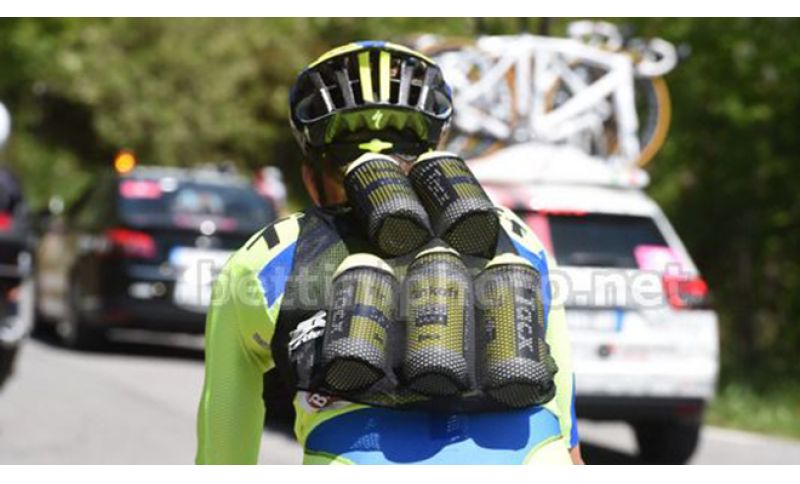

Climate has been changing in recent years, with temperatures becoming increasingly higher and harder to endure. However, we see that at the Tour de France, where races are run with the thermometer in the red zone, riders still manage to deliver excellent performances. It's not just the result of cold water bottles or ice cubes in jerseys; there is now a climate acclimatization methodology that some teams adopt when descending from high-altitude training camps.
Frédéric Grappe, performance manager of Groupama - FDJ, explained this system well, highlighting that heat has become, like altitude, a preparation method that modifies certain physiological parameters in athletes.
For example, at Q36.5, a good third of the technical staff uses this process to improve riders' physical fitness before a major goal. Indeed, Théo Ouvrard, former performance manager of Arkéa - B&B Hotels and now coach of Tom Pidcock's Swiss team, admitted to the newspaper l'Equipe that he uses this high-temperature system to improve race performance. Therefore, heat has become a common method in a rider's preparation, albeit to a lesser extent than altitude training.
But how does it work for the human organism? As we know, high-altitude training, in response to hypoxia, increases erythropoietin (EPO) production, which stimulates red blood cell production and thus improves muscle oxygenation. With heat, there are physiological impacts identical to those of altitude, but the main advantage of prolonged exposure to high temperatures is increased plasma volume, accompanied by water retention. And since blood is largely composed of water, its reserves become larger. In other words, it's as if the rider's engine suddenly increases in size, with the advantage that water retention can be easily eliminated through urination. Consequently, there will be a benefit in transporting oxygen to the muscles. Scientific studies have shown that when a body sweats a lot, hematocrit levels also increase, and VO2Max improves by two to four points, which does not happen at altitude, making heat training interesting.
Obviously, heat training can be added after high-altitude training. Altitude preparation involves three weeks of stay between 2,000 and 3,000 meters above sea level, to have effects lasting four to six weeks. But how does heat preparation work? The goal is to perform efforts at an elevated body temperature and maintain a medium effort intensity that allows prolonged sweating. Studies conducted in France and Belgium have shown that prolonged sweating activates sweat glands that enable thermoregulation through sweat, thus creating vital functional adaptations for the future. This system is also adopted by several cyclists to avoid collapsing due to high temperatures in races like the Tour de France. Michel Ries, a cyclist from Arkéa - B&B Hotels, when he was with Trek-Segafredo and didn't want to suffer from extreme heat, began training for acclimatization: from his personal experience, the results were multiple, managing to overcome heat crises that can occur in summer races.
There are naturally different protocols that change based on the desired goal. For a summer race, 5-6 heat-targeted training sessions are sufficient, while to achieve a performance result, more sessions will be needed, but it's always important to remember that the effects of these training sessions last only a few days and are better suited to obtaining a result in the first week of a grand tour or a one-day race.
Preparing a suitable environment for this type of training is not difficult, and some riders resort to using a stove. A room should be prepared with an internal temperature of about 38.5°C, according to the protocol that Frédéric Grappe explained in an interview with the sports newspaper l'Equipe. The temperature should be raised when the rider returns from a normal training session. It can reach 39°, but going beyond becomes counterproductive for the body or even risky if performing any sporting activity. From French tests, it was seen that irreversible brain damage can occur in case of severe overheating. In any case, above 39°C, these preparations are impossible and should only be done under the supervision of qualified sports technicians experienced in the matter.
So if an amateur were to improvise such a methodology, they would have an excellent chance of causing irreparable damage to their organism.
This methodology is well-known within the French Cycling Federation, which also appreciates the passive method, namely the use of hot saunas after a training session. However, it has been seen that heat offers its best effects, for example, when an athlete is about to compete in a time trial, with benefits appreciated in power output.
According to Emmanuel Brunet, performance manager of the French Cycling Federation, heat has the advantage of being easier to manage compared to altitude. According to the technician, the consequences of heat on an unacclimatized body are now well understood. The process begins with activity limitation, then enters a safety mode because plasma volume is insufficient to play its role as a thermal regulator. Consequently, heart rate no longer increases slowly, and power reduces. Brunet is convinced that today it is simply inconceivable not to perform this acclimatization in the era of global warming for an athlete. The French Federation was able to quantify an increase in power developed by each athlete with this heat method, with a power increase between 5 and 6%. It is not true that, unlike altitude, this method works for everyone: one must always pay attention because a rider could quickly become dehydrated or suffer. Moreover, the aspect of stress should not be underestimated, and therefore heat sessions must be done in specific situations. When a body works at high temperatures, both the physical and mental aspects undergo significant stress, and for this reason, everything must be monitored in the smallest details to avoid unpleasant surprises or the rider deciding to abandon this methodology.

